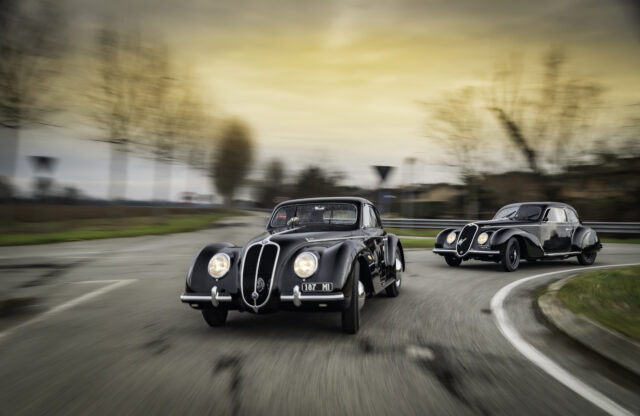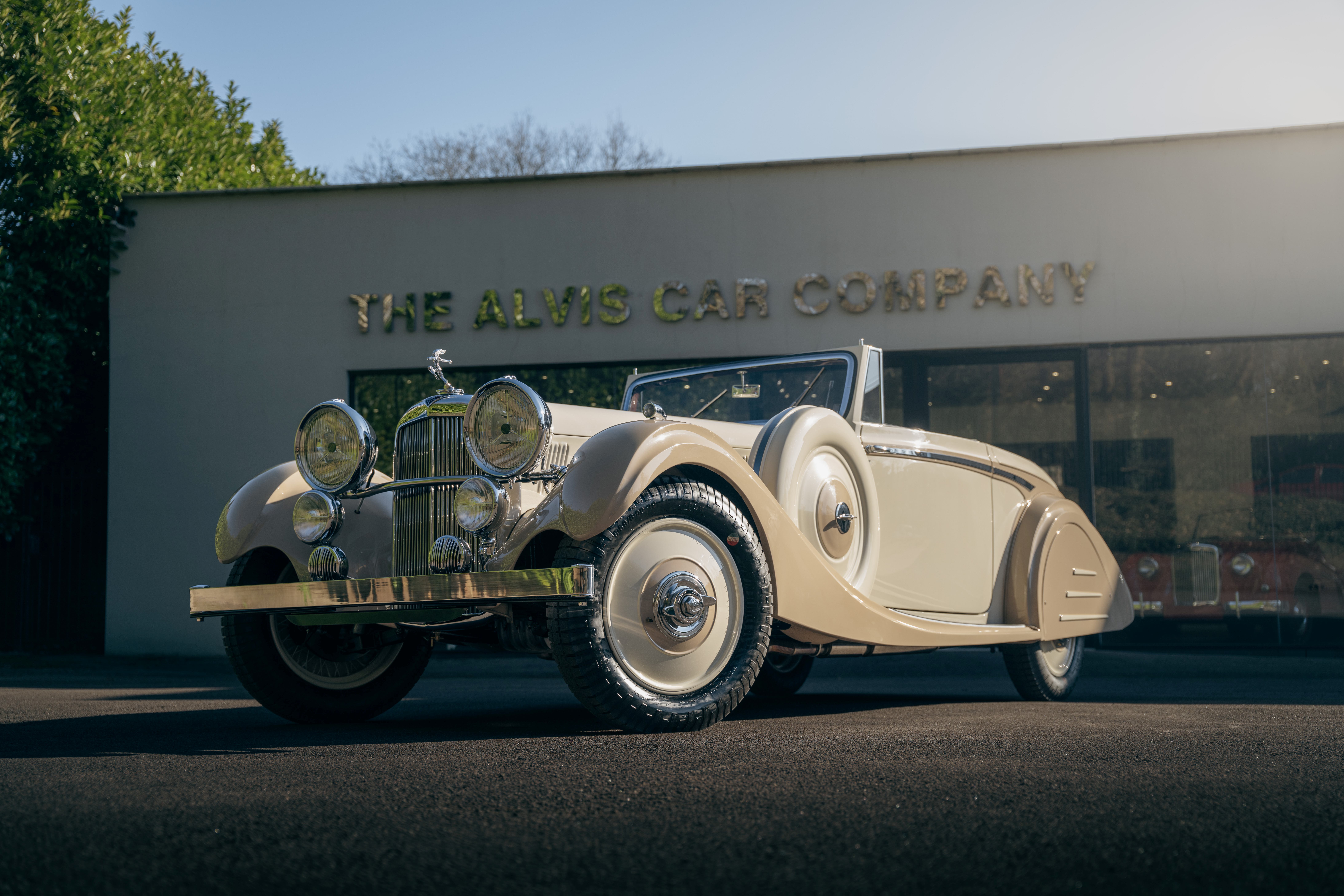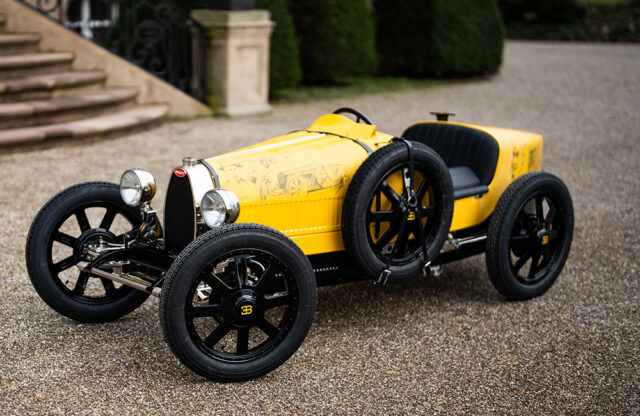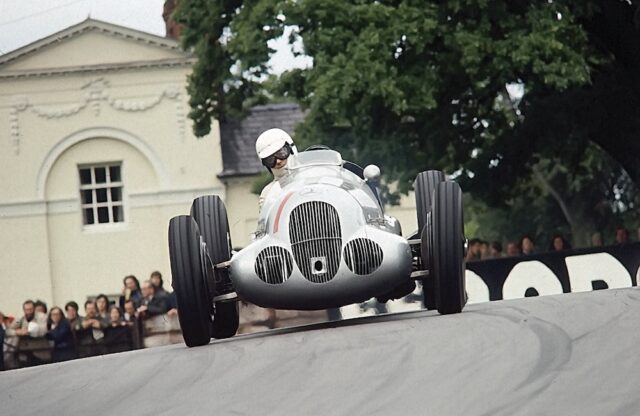WORDS AND SKETCHES: PROF. MASSIMO GRANDI
Genetically, the 256 Coupé is a fast and sporty car, albeit a ‘road’ version of the genre. Let’s not forget that the creator of the concept of powerful closed-top cars with numerous comfort features and elegant interiors – a style subsequently dubbed ‘Granturismo’ – was none other than Felice Anderloni.
‘GT’ has since assumed an increasingly broad meaning, often simply referring to two- seater coupé versions of saloons of the same name. Not all GTs are or were Granturismos, in the same way as many true Granturismos are or were not actually called GTs.
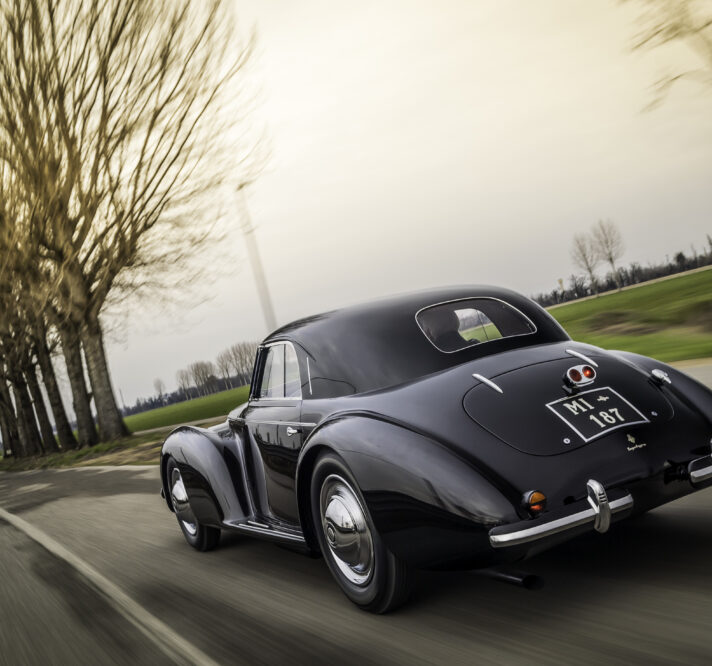
A new world of possibilities opened up, allowing Anderloni to create a masterpiece; the 8C 2900B Berlinetta
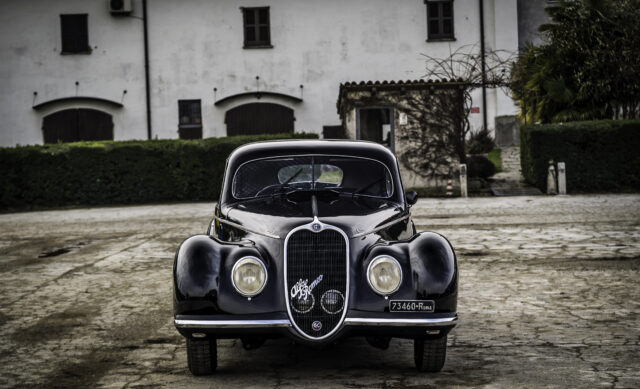
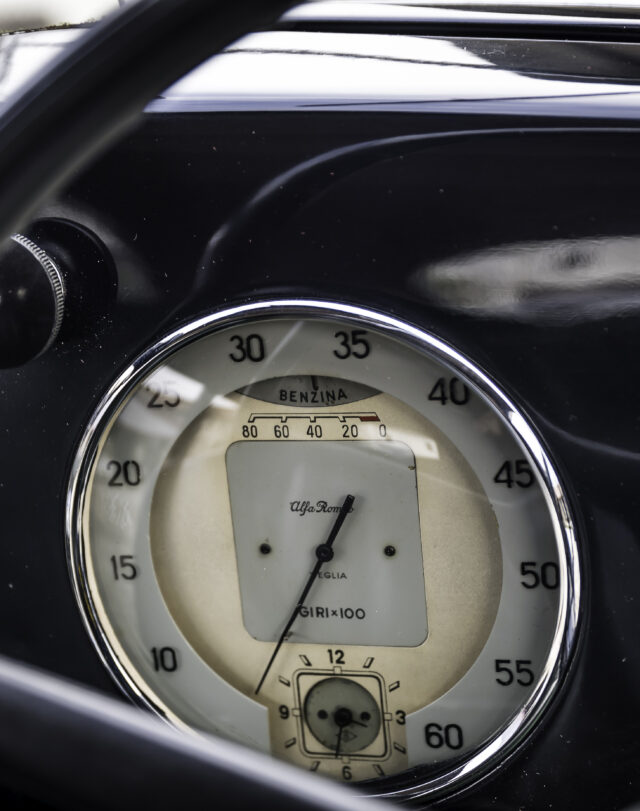
This story first appeared in Magneto issue 16.
In 1937, Touring patented the Superleggera system. This tubular cage fixed to a base frame made it possible to obtain more strongly convex surfaces, and so to create ovoid volumes far more aerodynamic and harmonious than those dictated by the previous systems.
A new world of possibilities opened up, allowing Anderloni to create a masterpiece; the 8C 2900B Berlinetta, shown in Milan in 1937. This marked the start of a rapidly evolving chapter of new language codes. The culmination was perhaps the most prestigious, exclusive and refined model; the fast, comfortable and elegant two-seater 256 Coupé Touring.
While retaining the technical and mechanical characteristics of its racing counterparts, it had lines typically associated with road models. At the same time, it boasted several features that, betraying its competitive heritage, can only be described as purely aerodynamic choices, such as the front with a deeper and more rounded profile, and the lights that seem to sit in the wide, profiled section between the fairing and the wings.
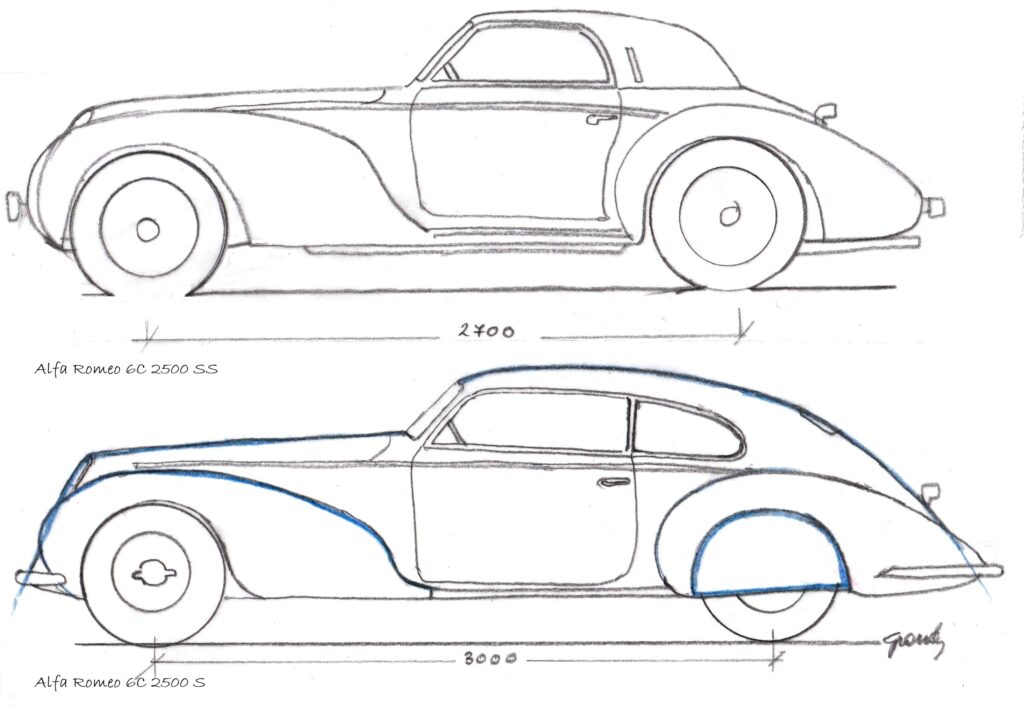
With regard to the latter, the ‘pontoon’ look was discarded in favour of a frontal solution typical of the 1939-40 period – a wing with an ‘elongated’ upper profile connected with the running board by a rather pronounced ‘S’. This is seen in other cars from the period, too, namely the Fiat 2800 and Alfa’s 6C 2500 Torpedino Brescia – which became Ferrari’s first car, the 815 Auto Avio Costruzioni.
Looking at the 256 sideways on, the straight line formed by the bonnet and beltline as far as the edge of the roof merges seamlessly with the wide and harmonious curves of the wings and wheelarches. Its peculiar design becomes even more apparent when compared with the longer 2500 Sport.
The change and evolution of the interpretative key is immediately clear from the design of the sides and the rear. Paradoxically, even though the 256 derives from a race car, it immediately appears less ‘aggressive’, less racing oriented and more suitable for touring and social use. And this is despite the two models being designed by the same hand.
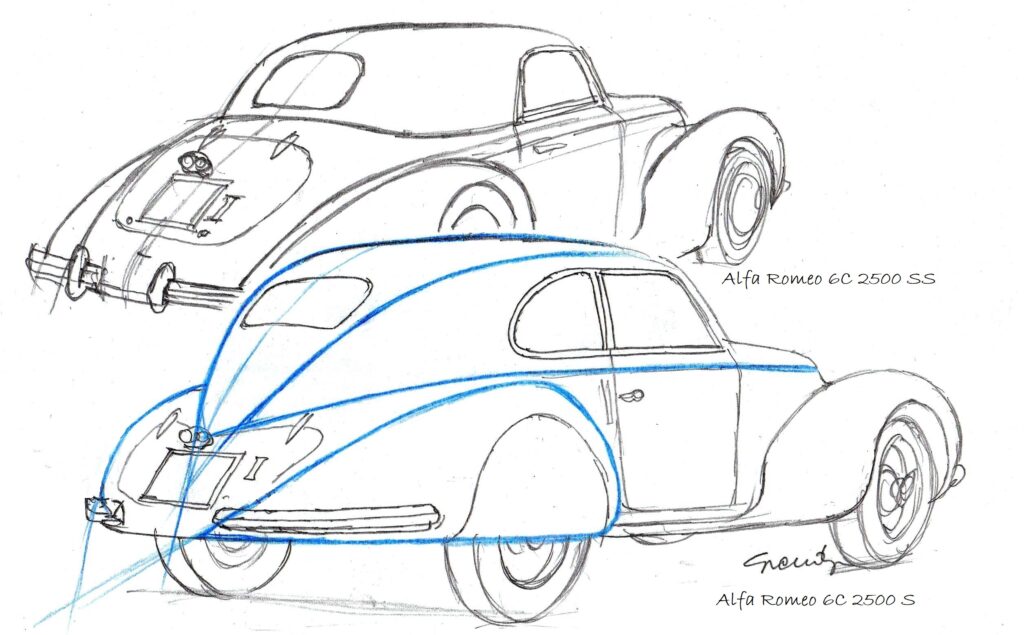
The Sport’s main lines are tauter, the angle formed by the bonnet and grille profiles is more angular, and the wing geometry is more oval, while the ‘S’ connecting with the running board is shorter and lower. Against that, the ogival pavilion covering that extends into a broad parabola descending into the tail, like the rear wing with fairing, are more in line with an overall vision that can be seen as a refined representation of speed, power and competitive aggression.
The lines, while still betraying a sporty soul, thus become gentler and more refined, with the design veering towards less accentuated and taut forms, in favour of a more fashionable and fun spirit. The showy chrome wheel covers also seem to be part of this movement along a path that will gradually lead us to the magical Villa d’Este season.
But there is another aspect that must also be considered in order to truly understand the nature of this car and how it fits in the spirit and evolution of the work of Anderloni and Touring: the interior.
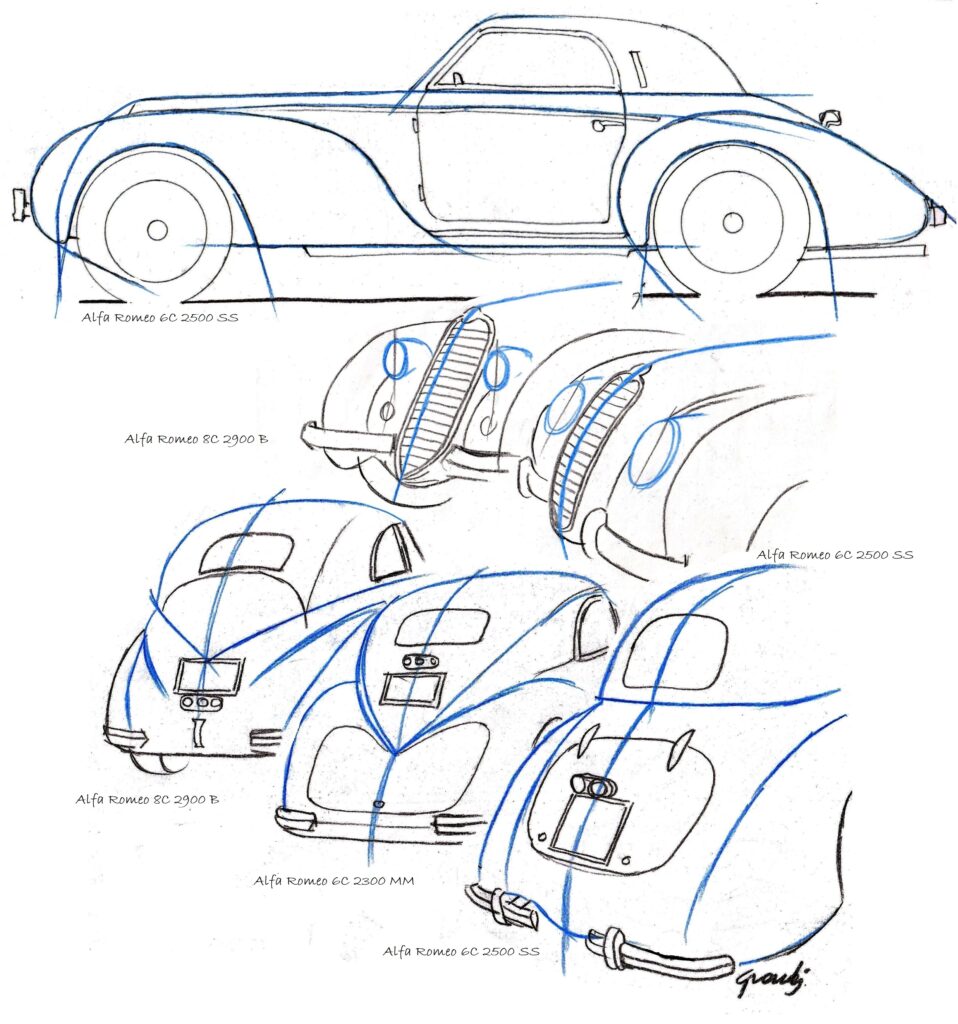
The Superleggera’s invention made it possible to build much lighter cars – and some of this weight saved was recovered in the form of useful comfort and safety devices. Touring bodies were simple and linear, devoid of superfluous decorations, but by no means spartan when it came to the interior furnishings and accessories. Even though they were not officially referred to with the acronym, they were in fact true GT cars, with superior equipment and finish.
All this is borne out by our car’s interior. It has no unnecessary frills or chrome parts, but everything is very carefully thought out, well designed and produced using top materials. In short, it is the cabin of a car of international renown; the two-door GT coupé – a central theme running through Touring’s design and production.
How fortunate we are to still have this car around today, perfectly restored and with its timeless beauty intact. It represents a key stage in the history of the Touring Superleggera and of Alfa, and remains a living and powerful testimony to Italian design.
